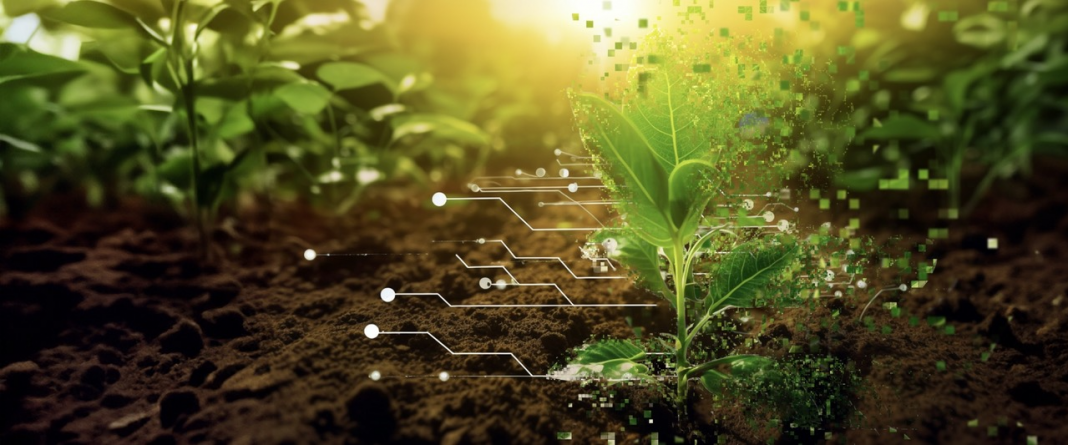Dr. Sebastian Schultheiss, Co-Founder and Managing Director at Computomics, walks us through harnessing crop breeding innovations for a sustainable agricultural future
Our agricultural production today faces the dilemma of addressing two challenges at once. Food security and nutrition on the one hand, sustainability and resource efficiency on the other. In other words, farmers must produce enough food to feed the world’s growing population today while also protecting the environment and ensuring that they can continue producing food tomorrow.
Extreme weather conditions like droughts, heat waves, floods and storms have become alarmingly common and are worsening yearly. These events erode the foundation of our crops, the livelihoods of millions of farmers, and, by extension, the global food supply chain. Addressing these challenges is an urgent concern for a sustainable agricultural future.
A sustainable agricultural future
Sustainable agriculture requires a collaborative approach integrating field management, plant physiology, nutrition, protection, and plant breeding. However, plant breeders are responsible for providing a long-term solution through plant genotype improvements. Traditional plant breeding is a complex, laborious, time-consuming, and costly endeavour that often requires a high degree of adaptability to respond swiftly to changing demands. One key to achieving this goal lies in technological innovations in plant breeding.
Plant breeders and their efforts in developing crop varieties that meet the ever-changing needs of society have an important and long tradition in agriculture. Today, they face the daunting task of continually increasing crop yields, ensuring the resilience of these crops in the face of pests and diseases, as well as climate change – and doing it all as efficiently, sustainably, resourcefully and cheaply as possible. Bearing that in mind, new technologies such as artificial intelligence (AI) offer a glimmer of hope.
Agriculture: AI tools to revolutionise plant breeding
Machine learning and deep learning are cutting-edge AI tools that have the potential to revolutionise plant breeding. These technologies enable breeders to process vast amounts of data, analyse phenotypic, genetic, and environmental information, then learn from it and predict which plants will thrive best under specific environmental conditions and regions. By harnessing the potential and power of AI, plant breeders can accelerate the development of climate-resilient crop varieties while optimising resource use.
The technology is still in the development stage; however, some examples of commercial use already exist. One promising project in this regard is TRAIT4.0, funded by Horizon Europe, the EU’s main funding programme for research and innovation. TRAIT4.0 aims to unleash the transformative potential of machine learning in plant breeding to address the urgency of global challenges: enhancing global food security, tackling climate resiliency, and promoting resource efficiency.
⨉SeedScore® machine learning technology for agriculture
At the heart of TRAIT4.0 is ⨉SeedScore®, Computomics’ proprietary machine learning technology. ⨉SeedScore® is the first disruptive machine learning-based technology that integrates genomic, environmental and climate data to navigate gene and trait interactions, accelerate genetic gain, and provide accurate performance predictions to address current and future breeding challenges directly.
One of its main strengths is the ability to predict the performance of complex traits for any specific need, climate and location. The technology’s algorithm takes genetic data of the relevant plants and combines it with additional variables to fully capture the Genotype × Environment × Management (G×E×M) interaction.
⨉SeedScore® then predicts the performance of all possible crosses or hybrids and uncovers high-yielding combinations, some that would have otherwise been discarded. The increased prediction accuracy of ⨉SeedScore® allows for shorter breeding cycles, releasing commercial varieties into the market much more quickly, and increasing efficiencies and genetic gain with every breeding cycle. This technology sets the stage for developing future-proof crops that can perform as all-rounders or be tailored to specific regions or climates.
However, it is essential to see these principles being implemented. Beck’s Hybrids, a U.S.-based corn breeding company, aimed to transcend the limitations of traditional breeding through its collaboration with Computomics. They used Computomics’ technology to expand their breeders’ predictions, resulting in more high-yielding, region-specific stable products delivered faster. It led to more informed decisions and more reliable crop traits, placing Beck’s among industry leaders. This collaboration exemplifies the potential for blending innovative methods with traditional practices to meet global food demand sustainably.
Collaboration and investment for a sustainable agricultural future
Moving these innovations from the lab to the fields is a process that requires collaboration and investment from research and development, in both the private and public sectors. Investing in this kind of research and development in crop breeding is not merely a scientific imperative, but a societal one. The call for collaboration urges researchers, scientists, farmers, industry, and policymakers to all work together towards a solution. Such synergy is imperative to accelerate the development and deployment of crop varieties that are not only high-yielding, but are also resilient to the myriad challenges that threaten global food security and sustainability.


This work is licensed under Creative Commons Attribution-NonCommercial-NoDerivatives 4.0 International.


